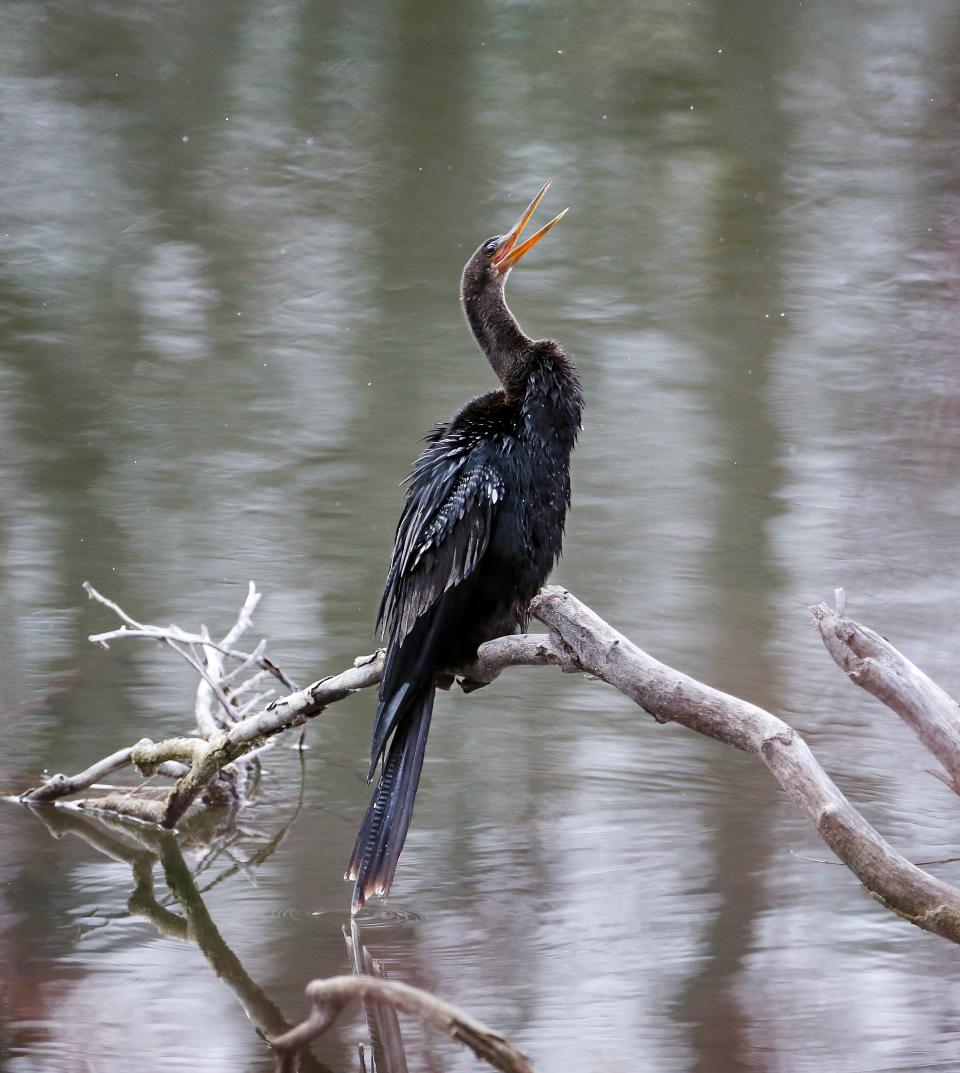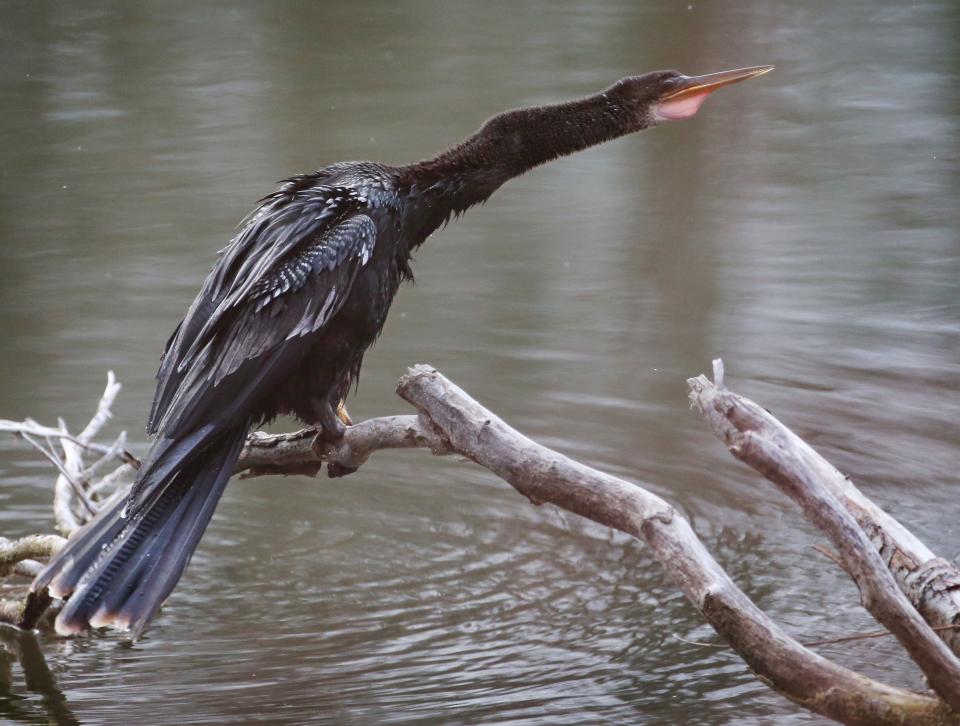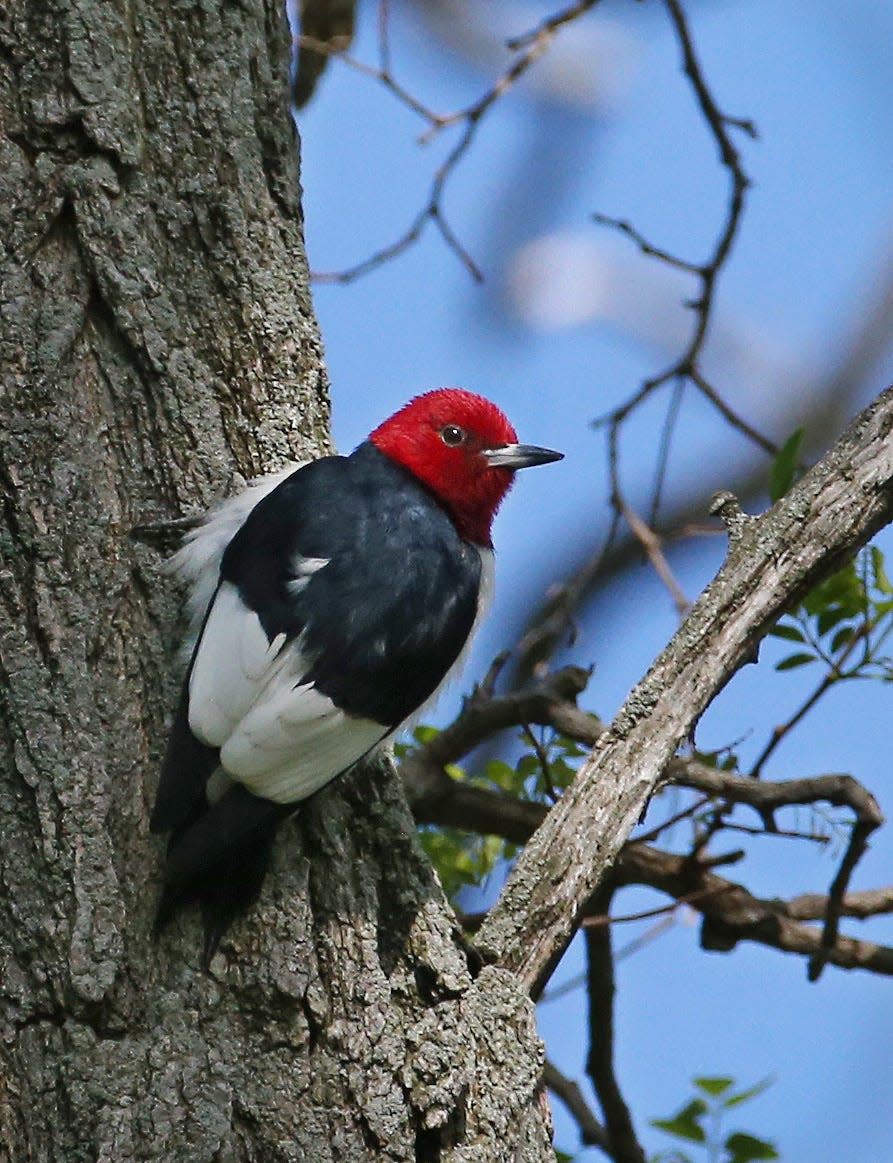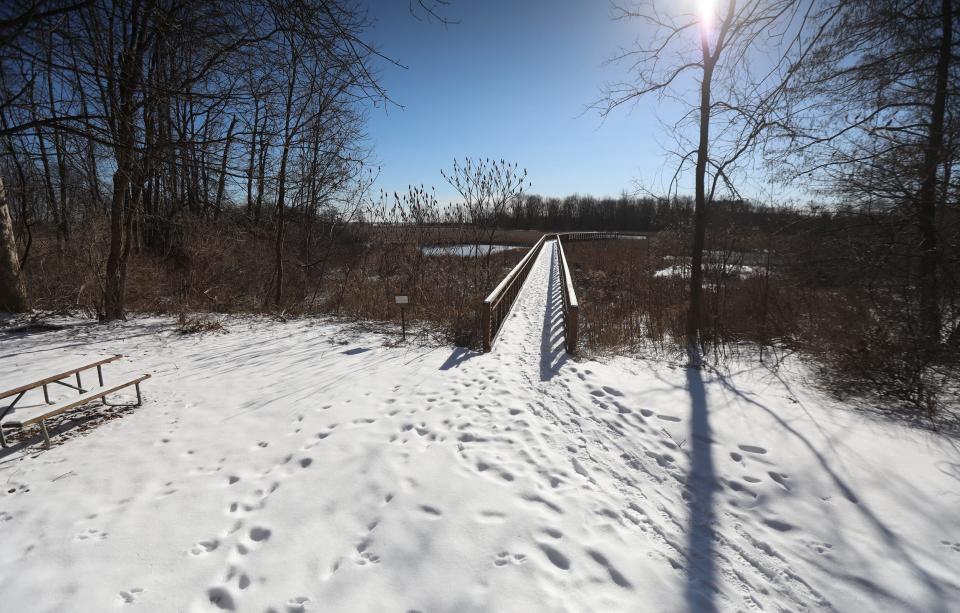What 'devil bird' sightings in New York tell us about migration and climate change
Eagle-eyed birdwatchers noticed a solitary visitor along the Black Creek in Churchville in December of 2020.
A lone anhinga, a name that means “devil bird” in the language of the Tupi people of Brazil, was spotted far from its traditional range.
A 2022 study by scientists the National Audubon Society found the winter range of all birds in the eastern U.S. has moved due to climate change, though those restricted to certain habitats are especially vulnerable.
The anhinga, for instance, typically lives year-round in tropical climes, including the southeastern United States, Cuba, Brazil and other parts of Central America and northern South America. Their breeding range stretches further north, into Texas, Louisiana and up the coast as far as South Carolina. A surface diving bird, they feed on fish and are often seen drying their outstretched wings.
An anhinga sighting in Brooklyn in spring 2023 made headlines in the New York Times; around the same time a flock of 22 of the birds, also known as “water turkeys” or “snake birds,” were observed in Rome, Oneida County.

Why your bird guide might be out of date
Most birding field guides are already out-of-date by the time it makes it to print, said Andrew Farnsworth, a visiting scientist at the Cornell Lab of Ornithology and migration ecologist.
“And with climate change increasingly speeding up with our activities as humans, not only are they changing as soon as the map is published, they’re changing faster than ever,” Farnsworth said.
Real-time information on bird ranges through resources like the eBird database from Cornell Lab of Ornithology allow researchers to observe birds appearing in new areas, and sometimes breeding in those areas, too. Climate change is adding dynamism to bird distribution, already subject to factors like habitat and availability of food.

“Whether it comes to species that are preceding in a particular direction, like birds expanding north with warmer winter and warmer spring temperatures each year, or whether it comes to birds that are more irregular and eruptive and moving around based on cycles of flooding or drought, you can start to capture those things in really new ways with a dataset like eBird and database like eBird,” Farnsworth said.
How migration timing is affected by climate change
One aspect of tracking bird populations that can rely on citizen observations is migration, especially in prime corridors, like Braddock Bay in Hilton that serves as a migratory stop-over for species like northern saw-whet owls.
Birds migrate to take advantage of seasonal resources, such as protein-rich insects, available in abundance during the warmer months in higher latitudes, Farnsworth said. They then return to the tropics where the sun’s energy is more consistent during the winter months.
“It’s all about tracking down seasonal resources,” he said. “So very closely tied to that there is climate on the planet and climate changes and birds track that … It’s a pretty, pretty tight relationship that birds exemplify quite well.”
More: Hummingbirds are migrating now. When will we see them in New York?
A review of 24 years of weather radar data shows North American bird species are shifting their spring migration earlier by two days each decade, according to a study in Nature Climate Change. Peak migration times have shifted earlier in spring and autumn, with a more pronounced change in higher latitudes. The study also found warmer spring temperatures related to earlier arrivals for migratory species.
Climate change and vulnerable birds in New York

The National Audubon Society has an online resource, “Survival by Degrees,” based on a 2019 study of 604 North American bird species using 140 million bird observation records, including those from citizens, plugged into climate models. The study found as many as 64% of the continent's bird species are at risk of extinction from climate change, depending on how much average temperatures rise.
Should global temperatures rise by 2 degrees Celsius, expected by 2050 without significant changes to combat climate change, there will be 12 highly-vulnerable species of birds, 82 moderately-vulnerable species, 51 low-vulnerability species and 82 stable species in the summer in New York.
Among those most vulnerable species are eastern towhees, trumpeter swans, red-headed woodpeckers and yellow-throated warblers. The stable species include the state bird, the eastern bluebird, as well as year-round residents like northern cardinals and black-capped chickadees.

Warming temperatures aren’t expected to impact all species the same, with habitat playing a crucial role in how threatened any individual species may be. All of North America’s 16 arctic bird species would be threatened, along with the overwhelming majority of boreal forest birds (98%), western forest birds (86%) and waterbirds (78%).
More: Climate change is affecting seasonal indicators. How phenology helps track those impacts
How can I help study the impact of climate change on birds?
Bird watchers are hardwired to go out, observing and participating in their environment, Farnsworth said. Those instincts are helpful to researchers studying the impact of a warming planet on local bird species.
“I think it’s important to highlight that there’s still enormous value in going out and opening your eyes and ears and reporting what you see,” Farnsworth said. “Even if you’re a right-out-of-the-house novice, there’s value in doing that and in learning … what’s in my yard.”

Those data are important in not only understanding where and when birds are occurring and how common they are, but then eventually how common those common birds are. Using sites like eBird can empower anyone making observations to share information with researchers and keep track of their lifetime list.
“Are they still as common as they once were and where are we seeing changes?” Farnsworth said. “The observations are the currency we need, I think, is the bottom line.”
— Steve Howe covers weather, climate and lake issues for the Democrat and Chronicle and held a hummingbird in his hand when helping to band birds as a kid. Share with him at [email protected].
This article originally appeared on Rochester Democrat and Chronicle: What 'devil bird' sightings in NY tell us about migration, climate change
